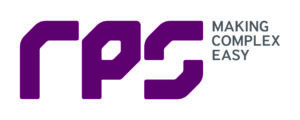BOOKINGS CLOSE AT 17.00 ON 9 FEBRUARY 2021!
9th February 2021
Abstract
The Z2 Haupt Dolomite – A New Oil Play on The Margin of the Southern Gas Basin
Peter Browning-Stamp – Senior Consultant Geoscientist – Horizon Energy Partners
The Zechstein (Z2 Cycle) Haupt Dolomite has for many years been a forgotten and neglected exploration target In the UK Offshore, despite successful production of both oil and gas from other areas of the Southern Permian Basin. There are several reasons for this; Since the earliest days of Southern North Sea exploration, the play has been overshadowed by drilling campaigns focussed on Rotliegend, Bunter and deeper Carboniferous targets. This is not hard to understand, given the early impetus of UK explorers hunting the next Groningen Field, mapping sizeable prospects, even in those days, on early 2D seismic data. Vastly improved seismic over the years then led to a ceaseless stream of prospects mapped at these target levels, and the reservoirs, by comparison with the fickleness of Zechstein carbonates, were very user friendly. From the earliest offshore wells however, encouragement was there to find within the Zechstein carbonates if you looked for it, with tantalising oil shows, test results, porosity, and subsequently several discoveries. Detailed palaeogeographies were however little understood, a situation not helped by the diagenetic overprint on the original depositional environment, and a general lack of core data and fluid samples study.
The focus area for the Zechstein lies near the southern margin of the Mid North Sea High, in the southern portions of quads 36 and 37. This area is close enough to infrastructure to be of interest and lies away from any environmental sensitivities of the Dogger Bank. Historically this area has had poor data coverage with limited sparse 2D data sets and a distinct lack of 3D data, and hence our lack of detailed understanding of the seismic facies. Fortunes changes somewhat in 2015 with the OGA supported MNSH Seismic program, providing the first modern imaging of the play. Since then new 2D, 3D and drilling in the area have heralding the long overdue renaissance of the Zechstein Play and 2020 was shaping up to be a key year, with further exploration and appraisal drilling campaigns planned. Many of these playing off the success of the 2019 Darach discovery (042/04-01) that hit Oil in the Zechstein Z2 Haupt Dolomites.
The principal reservoir comprises of reefal build-ups of the Z2 cycle Hauptdolomite, deposited as non-skeletal limestones in shallow water settings (well within the photic zone), above a legacy topography composed of Carboniferous anticlines that were subsequently draped by thickened banks of Z1 Werra Anhydrite. These were subsequently covered by the overlying Z2 Strassfurt Halite and Anhydrides. The Formation is believed to have been extensively altered post deposition by dolomitization and heavy fracturing, which can be clearly seen on the seismic. It is expected that very little of the original fabric remains. For many source has been the key risk for an so far from the prolific Westphalian of the central Gas Basin. Instead the source rocks for the play are believed to be lowermost Namurian and Visean shales, with some input from the Zechstein itself in many cases. Within the key area these source rocks generate significant amounts of oil. This has been supported by modelling and re-analysis of several key wells in the area that have oil shows, staining or fluorescence.
Modern state of the art 3D seismic gives us the opportunity to pursue a variety of Oil based Haupt Dolomite plays, seen and illuminated clearly for the first time. These range from isolated patch reefs (as seen at Crosgan), shoal features (as seen at West Newton), reefal front build-ups, toe of slope features, back reef ooid banks and lagoonal areas- to name but a few. By its very nature the Zechstein is complex, requiring detailed facies mapping and a clear understanding of the prospect geometries, as traps are likely to involve components of stratigraphic as well as structural seal, both lateral and vertical, along with diagenetic and / or fracture related components of either porosity destruction or enhancement. The ability to map in this detail and lack of understanding regarding source rocks has been historically lacking in the play, Explorers of 2020 and beyond should be able to carefully map Zechstein prospect geometries, using 3D data to best effect, while simultaneously hunting porosity using inversion and other techniques to chase this up and coming oil play across the region.
Sponsor
This event is kindly hosted by:

NO RECORDING AVAILABLE
We have not been granted permission to distribute the recording of this event.
Venue Information
Venue information
Venue name:
Online
Venue address:
This event will be delivered online.

